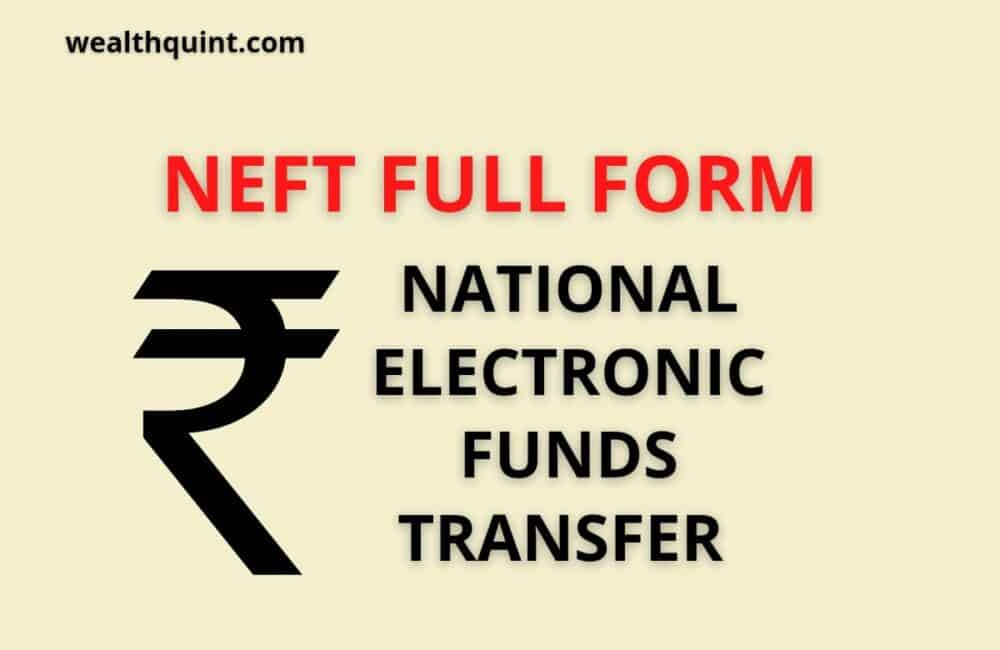The Full Form of NEFT is National Electronic Fund Transfer.
NEFT is the process of transferring money from one account to another account through electronic mode. The fund can be transferred by both NEFT-enabled inter and intra-bank in India only.
NEFT started in 2005 with 23 settlements of hourly batches, later changed to 48 settlements of half-hourly batches from 2019 to promote digital function.
Outside India, we can transfer money only in Nepal according to the Indo-Nepal Remittance Agreement. The limitation is 50 thousand per transaction, and a maximum of twelve transactions is feasible within a year.
Features Of NEFT
- Maintained by RBI(Reserve Bank of India)
- 24×7 service is available
Mandatory Information Required For NEFT
- Beneficiary’s Name
- Beneficiary’s Account Number
- Bank IFSC Code
Methods Of NEFT
- Online – Through online methods, transactions can occur by providing the beneficiary’s
details. The limitation depends on the customer’s bank(Net Banking Limit).
We can transfer money online through the net banking process. We need to log in with its respective bank and select an option like beneficiary’s name, account no., IFSC code, amount, method, etc.
After submission, we need to confirm through OTP and then money will be transferred after a few minutes.
- Offline – Offline service is available in the bank, and there is neither an upper limit nor a lower limit.
We can transfer money offline in the bank only by filling up the NEFT form with all the details of the beneficiary like name, account no., IFSC code, amount, method, etc.
After the form submission and money, the process will be handled by the bank employee.
Here is the list of approx. service charges apply by the bank.
| Sl. No. | Transaction Amount (in Rs.) | Approx. Charges apply by Bank |
| 1. | Upto 10,000/- | Rs. 2.50+GST |
| 2. | 10,000/- to 1,00,000/- | Rs. 5+GST |
| 3. | 1,00,000/- to 2,00,000/- | Rs. 15+GST |
| 4. | 2,00,000/- and above | Rs. 25+GST |
Advantages of NEFT
- The amount can transfer within a short period (usually, it takes half to 2 hours).
- The process is simple, safe, and secure.
- Service is available 24x7x365.
- No service charges are applicable for online methods.
Disadvantages Of NEFT
- Sometimes fund transfer may get delayed due to the process being based on batch settlement.
- Offline service is available on bank working days only.
- The transaction is possible within India(except Nepal) only.
- There is always a probability of account hacking during online transactions. We need to maintain password protection to keep our data safe.
- Service charges are levied on offline transactions.
- Only Rs. 50,000/- per transaction is allowed.
Conclusion
The service of NEFT is slow compared to IMPS and RTGS. There are always some advantages and disadvantages of every tool, and we need to use it accordingly. So, the objective of NEFT is one can transfer their funds easily as low as Rs. 1, with the online and offline facilities.




